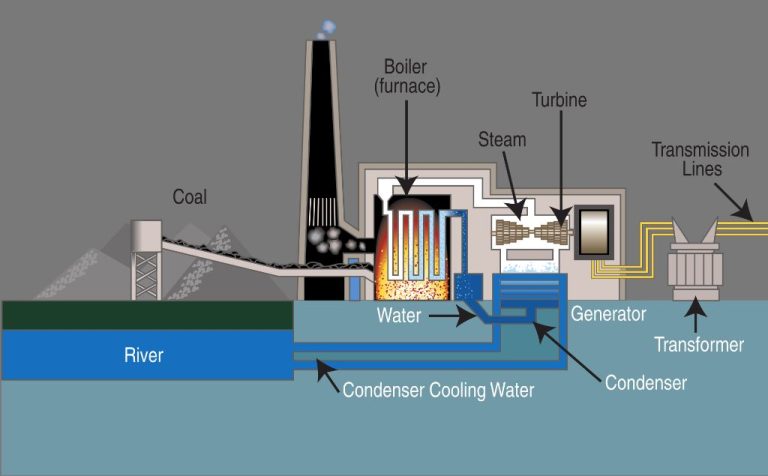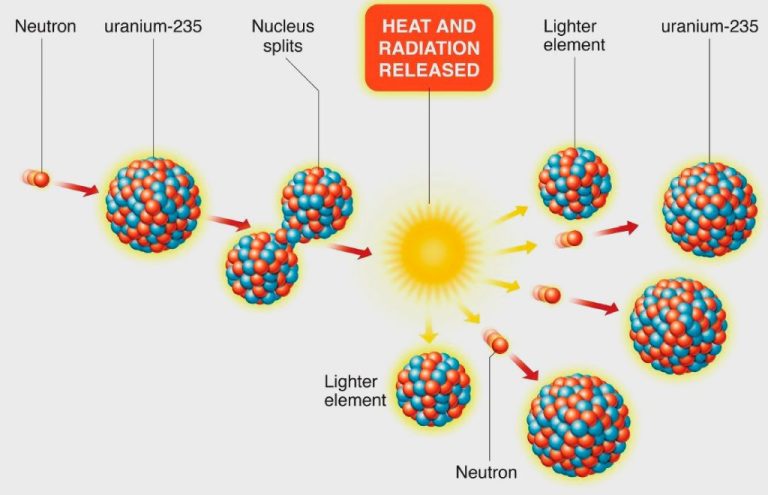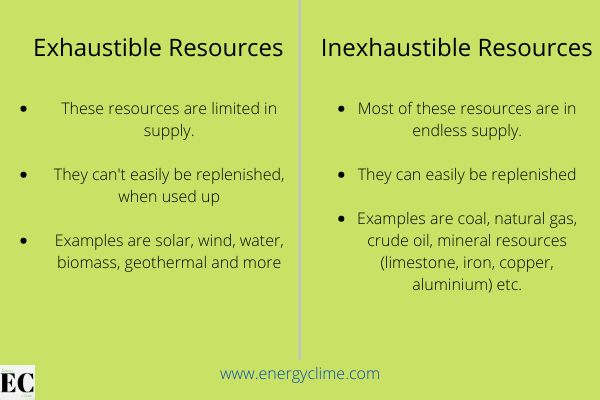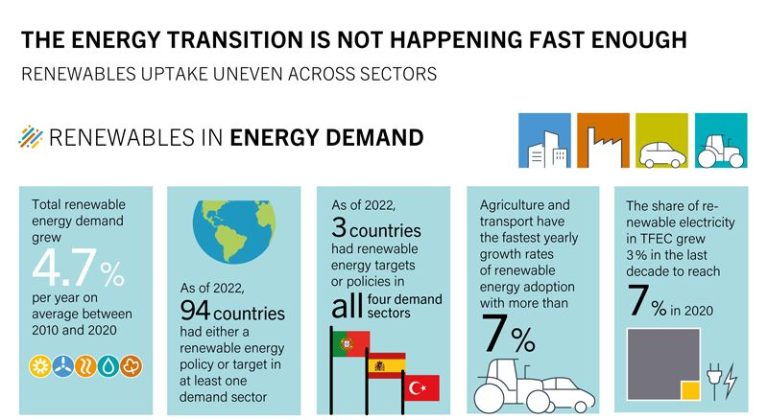What Represents Potential Energy?
Potential energy is the stored energy an object has due to its position or chemical configuration. There are several types of potential energy, including gravitational, elastic, chemical, nuclear, electric, magnetic, and thermal. We encounter examples of potential energy in everyday life. For instance, a ball held in the air has gravitational potential energy that can be converted to kinetic energy when it falls. A compressed spring has elastic potential energy that can propel a toy car. Gasoline has chemical potential energy that combusts in a car engine to produce motion. Uranium has nuclear potential energy that can be converted to electricity. Potential energy is an important scientific concept that enables everything from hydroelectric dams to chemical reactions.
Gravitational Potential Energy
Gravitational potential energy is the potential energy stored in an object due to the force of gravity acting on it. It depends on three key factors – the mass of the object, its height above a reference point (such as the ground), and the strength of the gravitational field. The more mass an object has and the higher it is positioned, the greater its gravitational potential energy.
On Earth, gravitational acceleration is approximately 9.8 m/s2. Using this value, gravitational potential energy can be calculated using the equation:
Ep = mgh
Where m is the mass of the object, g is gravitational acceleration, and h is the height of the object. This equation shows that doubling the mass or height of an object doubles its gravitational potential energy.
A common example is lifting a book from the ground onto a table. As the book is raised, it gains gravitational potential energy that can later be converted into kinetic energy if dropped back down. Hydropower is another practical application, where water accumulates gravitational potential energy when dammed at a height, which is then converted into electricity via turbines.
Elastic Potential Energy
Elastic potential energy is the potential energy stored in stretched or compressed objects. Some common examples are springs, rubber bands, bungee cords, and slingshots. When these objects are stretched or compressed, the elastic material is deformed from its natural relaxed shape. This deformation results in stored energy that can be released when the object returns to its original shape.

The amount of elastic potential energy stored is proportional to the force applied and the amount of deformation. For example, the more a spring is compressed or stretched, the more potential energy is stored. This principle is described by Hooke’s Law which states that the force needed to deform a spring is proportional to the distance the spring is deformed. The same concept applies to other elastic objects like rubber bands.
The stored elastic potential energy can be used to do work. A common example is a slingshot. By pulling back on the rubber bands, they deform to store elastic potential energy. When released, this potential energy is converted to kinetic energy as the projectile is launched forward at high speeds. The same process occurs with springs. Compressing a spring stores energy that can then be released to propel objects.
Elastic potential energy powers many useful mechanical devices and tools. It allows energy to be stored in a compressed state and released on demand in a controlled manner. The ability to store energy and release it when needed makes elastic potential energy an important and widely used form of potential energy in our everyday lives.
Chemical Potential Energy
Chemical potential energy is the energy stored in the bonds between atoms and molecules. Chemical energy is a form of potential energy, since breaking or forming chemical bonds involves energy being stored or released.
For example, the food we consume contains chemicals like carbohydrates and fats. These molecules contain chemical potential energy stored in their chemical bonds. When we metabolize food, these chemical bonds are broken through digestion and respiration, releasing the stored chemical energy that our bodies then use. The energy released allows our cells to carry out essential functions.
Another example is hydrocarbon fuels like gasoline, natural gas and propane. The covalent bonds between the hydrogen and carbon atoms in these fuels contain large amounts of chemical potential energy. This chemical energy is released when the fuels undergo combustion reactions with oxygen, producing carbon dioxide, water, and heat. The energy released is harnessed to power car engines, generators, heating systems, stoves, etc.
Chemical reactions can also absorb energy and store it in the new chemical bonds that are formed. Photosynthesis in plants is an example – it takes the electromagnetic energy from sunlight and stores it in the chemical bonds of glucose molecules formed from carbon dioxide and water.
In summary, chemical potential energy is the energy absorbed or released during chemical reactions. This energy is stored in the structural bonds between atoms within molecules. Chemical energy drives many essential biological and industrial processes.
Nuclear Potential Energy
Nuclear potential energy refers to the energy stored within an atom’s nucleus. The nucleus consists of protons and neutrons bound together, and the strong nuclear force between these particles holds a tremendous amount of potential energy.
This nuclear potential energy can be released in two main ways:
-
Nuclear fission – The nucleus of a heavy atom like uranium or plutonium can be split into smaller nuclei. This fission process releases energy as the original nucleus breaks apart.
-
Nuclear fusion – Light nuclei can be fused together to form heavier nuclei, such as hydrogen fusing to create helium. Fusion reactions release energy as the nuclei are combined.
Both nuclear fission and fusion convert some of the nuclear potential energy into kinetic energy. This kinetic energy primarily takes the form of heat and radiation. Nuclear power plants utilize fission reactions to heat water and drive steam turbines, while fusion is the process that powers stars like our sun.
In summary, nuclear potential energy represents the incredible amounts of energy stored in the nuclei of atoms. This energy can be tapped through fission or fusion reactions to produce electricity or drive astrophysical phenomena.
Electric Potential Energy
Electric potential energy is the energy stored in electric fields. It is the energy of an electric charge at a specific point in an electric field. This energy can be converted into other forms when the charge moves or the electric field changes.
Electric potential energy is closely related to voltage and electric charge. Voltage is a measure of the electric potential, or electric potential energy per unit charge. When a voltage is applied across conductive materials like metals, it creates an electric field. The higher the voltage, the stronger the electric field.
Charges can store electric potential energy when placed in these electric fields. Positively charged particles will gain potential energy when moved against the electric field, from areas of low voltage to high voltage. Negatively charged particles gain potential energy when moved in the same direction as the electric field, from high to low voltage areas. This potential energy can be converted into kinetic energy if the charges are allowed to move through a conductor.
Capacitors are devices that store electric potential energy. They contain two conductive plates separated by an insulator. When voltage is applied across the plates, an electric field forms between them. This field can store energy in the form of an electric charge on the plates. Capacitors have many applications, from electronic circuits to camera flashes, because of their ability to store and discharge electric potential energy.
Magnetic Potential Energy
Magnetic potential energy is the energy stored in magnetic fields. Some common examples of this include:
Inductors – When electric current flows through an inductor, it creates a magnetic field. This field stores energy. When the current is turned off, the collapsing magnetic field releases the stored energy.
Solenoids – A solenoid is a coil of wire that acts like a magnet when electric current passes through it. The magnetic field stores energy. This energy can be released to push or pull objects when the current changes.
The stronger the magnetic field, the more potential energy it can store. Magnetic potential energy is widely used in electronic devices and electrical components. Understanding how to harness it has enabled innovations like motors, generators, transformers, and magnetic data storage.
Thermal Potential Energy
Thermal potential energy is the internal energy stored in matter by the motion of its molecules. As molecules vibrate, rotate, and translate within a substance, they possess kinetic energy. The total sum of this microscopic molecular kinetic energy is known as thermal energy or heat.
Thermal energy is directly related to temperature. Temperature is a measure of the average molecular kinetic energy of a substance. As thermal energy increases, molecular motion rises, and temperature goes up. Likewise, decreasing thermal energy lowers molecular agitation, reducing temperature.
Substances store different amounts of thermal energy based on their heat capacity. Heat capacity is the amount of energy needed to raise a substance’s temperature by one degree. Materials like metals have high heat capacity and can stockpile more thermal energy at a given temperature than substances with low heat capacity.
Thermal energy flows spontaneously from objects at higher temperatures to those at lower temperatures until thermal equilibrium is reached. This heat transfer ceases once the objects are at the same temperature and no longer possess a difference in their thermal potential energy.
Applications of Potential Energy
Potential energy is essential for many devices and systems that we use every day. Here are some key applications of potential energy:
Batteries
Batteries store chemical potential energy and convert it into electrical energy which powers countless devices. The chemical reactions inside a battery release electrons which can perform work.
Dams
Dams utilize gravitational potential energy from the elevation of water. As water flows downwards through the dam, its gravitational potential energy converts into kinetic energy which turns turbines to generate electricity.
Stretched Springs
Springs and other elastic materials can store elastic potential energy when deformed. This energy releases when the spring returns to its natural shape, powering toys, engines, and other mechanical systems.
Converting Between Types of Potential Energy
Many systems are designed to convert one form of potential energy into another to perform useful work. For example, batteries convert chemical energy into electrical energy, dams convert gravitational energy into kinetic energy, and internal combustion engines convert chemical energy from fuel into thermal energy.
Understanding the interconversion of potential energy types allows us to efficiently harness and utilize these stored energy reserves.
Conclusion
In physics, potential energy represents the energy stored in an object or system due to its position, arrangement, or state. Some key types of potential energy we explored include gravitational, elastic, chemical, nuclear, electric, magnetic, and thermal potential energy. Understanding the concept of potential energy and its different forms is crucial in physics, engineering, and many areas of science.
Potential energy plays an important role in our everyday lives as well. For example, objects at a height store gravitational potential energy that can be converted into kinetic energy when they fall. Elastic potential energy allows us to use springs and rubber bands. Chemical potential energy in batteries and fuel provides power. Overall, the applications of potential energy are extremely far reaching.
In summary, potential energy fundamentally represents stored energy in a system that can be readily tapped and converted into other forms. Mastering the different types of potential energy and how to calculate them using position, mass, charge, configuration, and other properties provides a powerful toolkit for analyzing mechanical, chemical, electrical, and thermal systems. With broad relevance across physics and practical importance in everyday life, potential energy is a key concept to understand.






